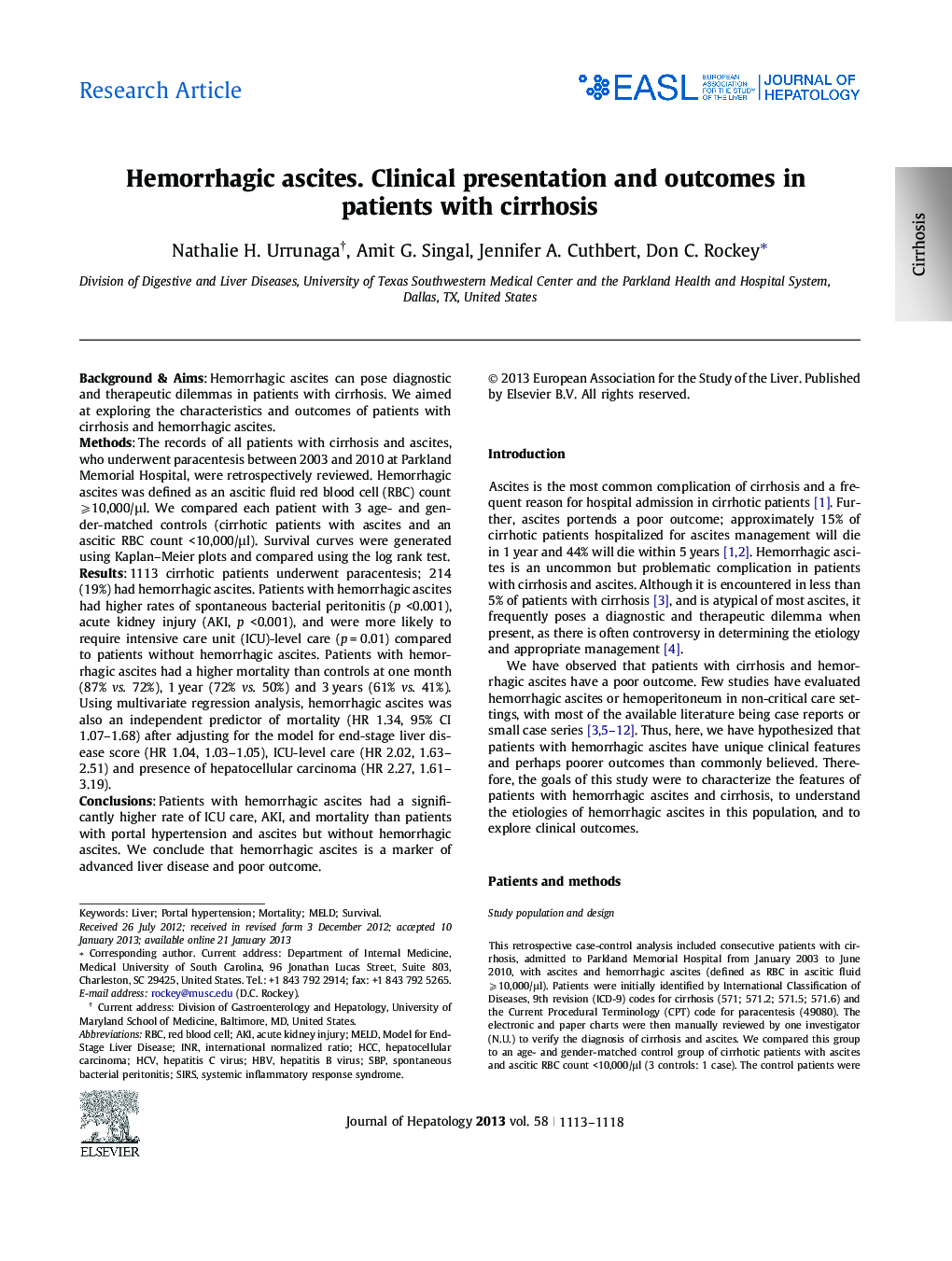| Article ID | Journal | Published Year | Pages | File Type |
|---|---|---|---|---|
| 6105987 | Journal of Hepatology | 2013 | 6 Pages |
Background & AimsHemorrhagic ascites can pose diagnostic and therapeutic dilemmas in patients with cirrhosis. We aimed at exploring the characteristics and outcomes of patients with cirrhosis and hemorrhagic ascites.MethodsThe records of all patients with cirrhosis and ascites, who underwent paracentesis between 2003 and 2010 at Parkland Memorial Hospital, were retrospectively reviewed. Hemorrhagic ascites was defined as an ascitic fluid red blood cell (RBC) count ⩾10,000/μl. We compared each patient with 3 age- and gender-matched controls (cirrhotic patients with ascites and an ascitic RBC count <10,000/μl). Survival curves were generated using Kaplan-Meier plots and compared using the log rank test.Results1113 cirrhotic patients underwent paracentesis; 214 (19%) had hemorrhagic ascites. Patients with hemorrhagic ascites had higher rates of spontaneous bacterial peritonitis (p <0.001), acute kidney injury (AKI, p <0.001), and were more likely to require intensive care unit (ICU)-level care (p = 0.01) compared to patients without hemorrhagic ascites. Patients with hemorrhagic ascites had a higher mortality than controls at one month (87% vs. 72%), 1 year (72% vs. 50%) and 3 years (61% vs. 41%). Using multivariate regression analysis, hemorrhagic ascites was also an independent predictor of mortality (HR 1.34, 95% CI 1.07-1.68) after adjusting for the model for end-stage liver disease score (HR 1.04, 1.03-1.05), ICU-level care (HR 2.02, 1.63-2.51) and presence of hepatocellular carcinoma (HR 2.27, 1.61-3.19).ConclusionsPatients with hemorrhagic ascites had a significantly higher rate of ICU care, AKI, and mortality than patients with portal hypertension and ascites but without hemorrhagic ascites. We conclude that hemorrhagic ascites is a marker of advanced liver disease and poor outcome.
